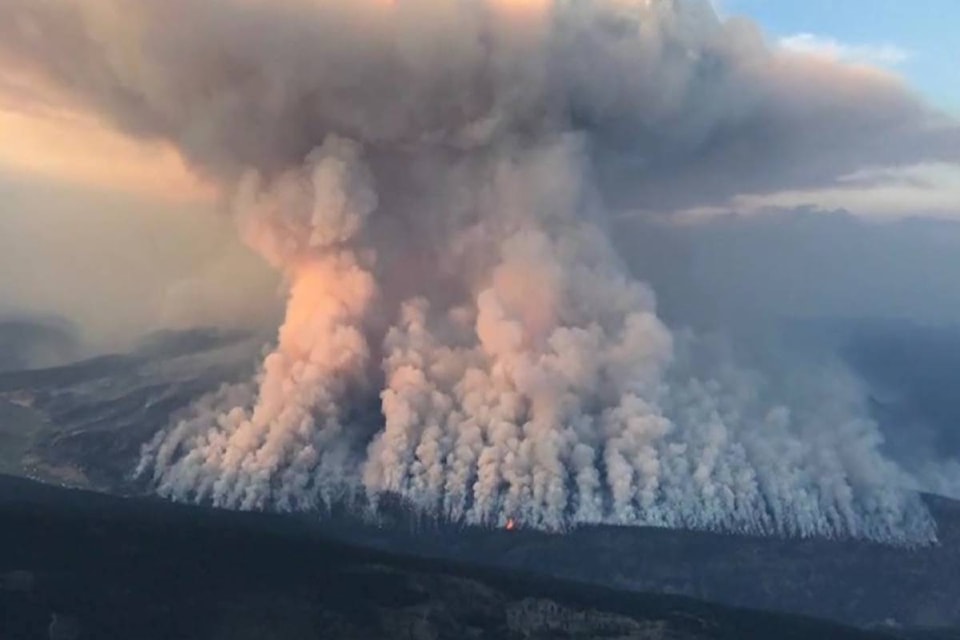A just-released report on the impact of last year’s devastating wildfires on the area’s economy paints a grim picture of the effects and makes clear that many area businesses are unaware of, or have not accessed, recovery programs designed to assist them.
The report was prepared for the Thompson-Nicola Regional District to assess the fire’s impacts and what can be done to help businesses recover.
READ:
The report states that the estimated total loss of sales due to wildfires in the study area was more than $21 million. The estimated total lost hours of employment due to wildfires was almost 100,000 hours, resulting in a very conservative estimate of just over $1 million in lost wages. Thirty per cent of respondents indicated that they had to engage in some form of layoffs.
The estimated total direct economic loss due to wildfires to date in the study area was almost $31 million; a number that is expected to grow. Forty-two per cent of businesses anticipate further economic loss in 2018 and beyond because of the 2017 wildfires. Some businesses are estimating, based on past experience, that tourism to the area will drop by 10 to 15 per cent for up to a decade.
“The biggest surprise for all of us was the extent of the economic impact,” says Debbie Sell, director of corporate services for the TNRD.
“People started providing information about their financial losses, but we didn’t anticipate the extent until we saw the analysis.”
She adds that the losses were not primarily due to businesses losing infrastructure in the fire.
“The losses came because of road closures, followed by evacuation alerts and orders.”
The report found that 457 or the 492 businesses with the TNRD were impacted in some way by the 2017 wildfires. The wildfires happened during the peak season for many businesses, intensifying the financial impact.
Almost half of businesses didn’t reach out for help
“Another interesting piece was the lack of understanding among business owners about what support programs are available,” continues Sell. “Programs were being developed and made available quickly, and one immediate thing we did was communicate out a summary of all the programs we were aware of… and sent them to business owners.”
The report states that about 19 per cent of businesses indicated that they were aware of aid programs but had not yet applied, and 39.2 per cent of businesses indicated that they had not participated in any support programs.
READ:
Sell says she was surprised to find that even if businesses knew about the programs available, many didn’t apply.
“They said it wasn’t worth the effort, or that they wanted to leave [the funding] for people who needed it more than they did. Some said the amounts offered barely covered their losses.” Other reasons for not applying included being unable to find funding to assist their business to recover; not meeting eligibility requirements of programs; and not having the capacity to complete the applications.
The sheer number of programs from different organizations was also identified as a factor.
READ:
It was also suggested that a translation program or initiative to help English as a second language business owners to participate in recovery would be helpful.
“It’s a conundrum: people don’t know the programs are there, or know but say it’s not worth their time,” says Sell. “The programs aren’t being fully utilized. People should be encouraged right now to access anything available to them. That shows that whatever programs are out there are addressing a need.
Many businesses not ready for disaster
Another discovery was that many businesses were not prepared for an emergency.
“People know what to take as individuals, but didn’t think to gather together their business documents. Business emergency planning is not being widely done.”
The report identified a lack of financial support to help businesses until the next [intake] cycle begins. Loans at zero per cent interest were cited as something that would be helpful to get businesses through what is for many a slow time of year.
Interior tourism needs help, report says
A common response from businesses was that marketing efforts need to be made to bring people back in to the area.
“There’s a sense of urgency to get a different message out as soon as possible; change the information that’s out there, and get the right information out,” says Sell. “Tourism groups are seeking and receiving funding to ramp up their efforts to get that message out.
“We’re all going through this together. There’s lots of evidence that everyone is trying to support businesses. It was a big event. We don’t want to downplay it, but we don’t want people thinking that it’s not Beautiful British Columbia anymore.”
editorial@accjournal.ca
Like us on and follow us on



